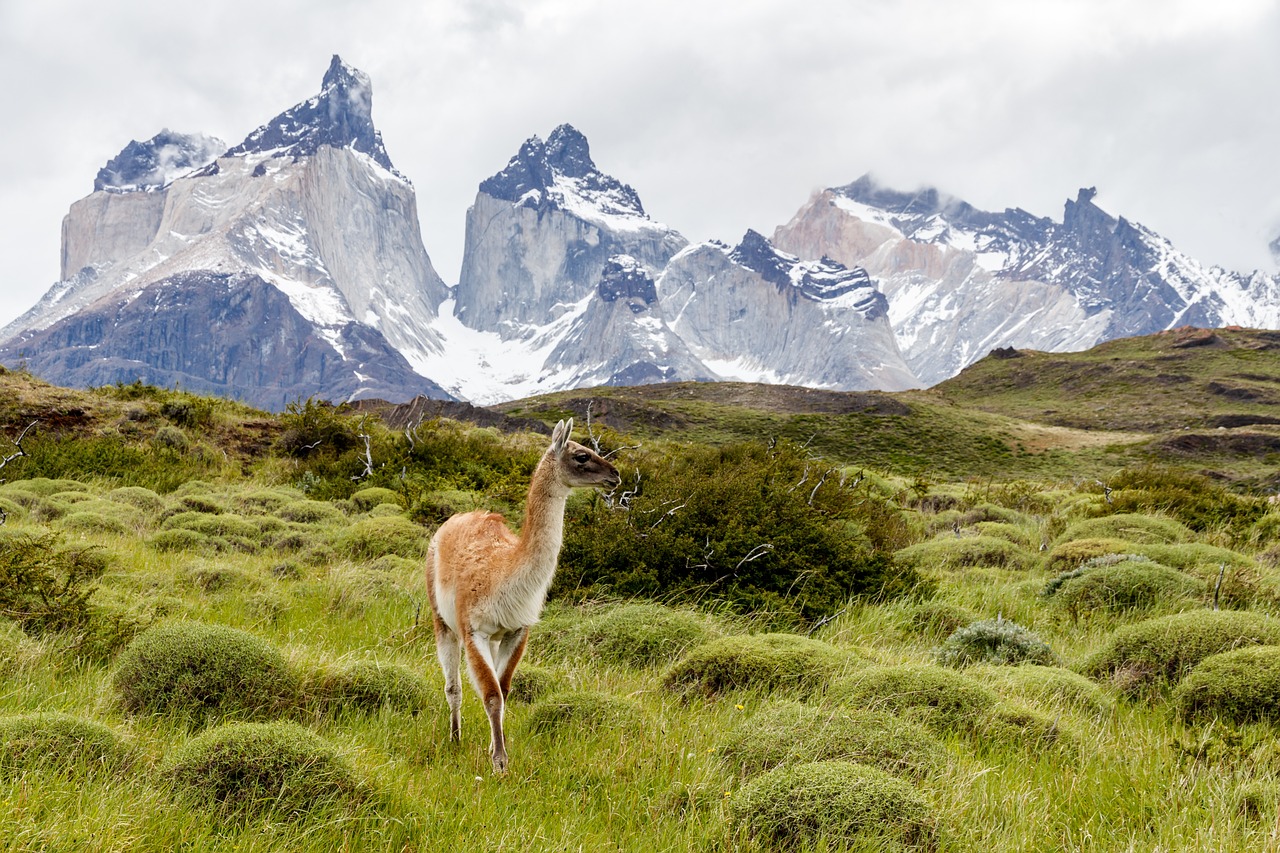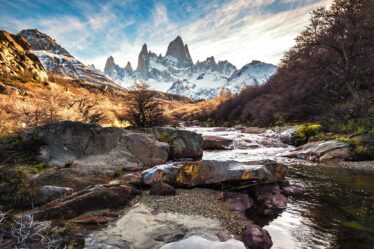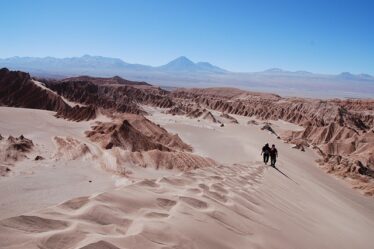
Torres del Paine National Park, located in the southern Chilean Patagonia, is one of the most breathtaking and iconic national parks in the world. Known for its towering granite peaks, shimmering turquoise lakes, and expansive glaciers, this UNESCO World Biosphere Reserve attracts adventurers, nature lovers, and photographers from all over the globe. This comprehensive guide covers everything you need to know about visiting Torres del Paine National Park, from its natural wonders and outdoor activities to practical travel tips and cultural highlights.
Geographical and Historical Overview
Geography of Torres del Paine National Park
Spanning over 227,000 hectares, Torres del Paine National Park is a region of remarkable geological diversity. It is named after its most famous feature, the Torres del Paine—three towering granite spires that dominate the landscape. The park also includes the Cuernos del Paine (the Horns), vast glaciers like the Grey Glacier, and numerous lakes and rivers. The dramatic landscape is shaped by the rugged Andes mountains and the Patagonian steppe.
Historical Significance
The area was declared a national park in 1959 and was later designated a UNESCO World Biosphere Reserve in 1978 due to its unique ecosystems and biodiversity. The park’s name, “Paine,” comes from the indigenous Tehuelche word for “blue,” referring to the blue hues of its lakes and glaciers. The history of human presence in the region dates back thousands of years, with evidence of early indigenous tribes such as the Aonikenk and the Kawésqar.
Visitor Information
Getting There
Torres del Paine is accessible by various means of transportation:
- By Air: The nearest airport is Presidente Carlos Ibáñez del Campo International Airport (PUQ) in Punta Arenas. From there, travelers can take a bus or rent a car to reach the park, which is about 5-6 hours away by road.
- By Bus: Regular buses run from Punta Arenas, Puerto Natales, and El Calafate (Argentina) to the park. Puerto Natales is the closest town to the park, about a 2-hour drive away.
- By Car: Renting a car is a popular option for those who want more flexibility in exploring the park. The main entrance to the park is about 112 kilometers from Puerto Natales.
Best Time to Visit
- Summer (December to February): The most popular time to visit, with long daylight hours and relatively mild temperatures. Ideal for hiking and outdoor activities, but also the busiest season.
- Spring (September to November) and Fall (March to May): These shoulder seasons offer fewer crowds, cooler temperatures, and beautiful natural colors. Spring brings blooming flowers, while fall offers stunning autumn foliage.
- Winter (June to August): The least crowded time to visit, with cold temperatures and shorter days. Some trails may be closed due to snow, but the park’s winter scenery is magical and offers unique photo opportunities.
Exploring Torres del Paine National Park
Natural Wonders
- Torres del Paine: The park’s most iconic feature, the three granite towers (Torres) rise sharply from the landscape. A challenging hike leads to the base of the towers, offering stunning views of these majestic peaks.
- Cuernos del Paine: Known as the “Horns,” these peaks are characterized by their unique shape and contrasting dark and light rock layers. They are visible from many parts of the park and are a favorite subject for photographers.
- Grey Glacier: Part of the Southern Patagonian Ice Field, Grey Glacier is a massive glacier that flows into Grey Lake. Boat tours and kayaking trips offer close-up views of the glacier’s towering ice walls.
- Lakes: The park is dotted with beautiful lakes, each with its own unique color and charm. Notable lakes include Pehoé, Nordenskjöld, and Sarmiento, all offering stunning reflections of the surrounding mountains.
- Salto Grande Waterfall: This powerful waterfall connects Lake Nordenskjöld and Lake Pehoé. It’s easily accessible and provides a dramatic and scenic stop along the park’s main road.
Outdoor Activities
- Hiking: Torres del Paine is a hiker’s paradise, with trails ranging from short walks to multi-day treks. The most famous routes include the W Trek and the O Circuit, both offering spectacular views of the park’s diverse landscapes.
- W Trek: A 4-5 day trek covering about 80 kilometers, the W Trek passes by the park’s most famous landmarks, including the Torres, the Cuernos, and Grey Glacier.
- O Circuit: A more challenging and longer trek (7-9 days) that circumnavigates the Paine Massif, offering a more remote and comprehensive exploration of the park.
- Wildlife Watching: The park is home to a variety of wildlife, including guanacos, foxes, Andean condors, and the elusive puma. Guided wildlife tours can enhance the experience and increase the chances of spotting these animals.
- Kayaking and Boat Tours: Kayaking on the lakes and rivers offers a unique perspective of the park’s scenery. Boat tours to Grey Glacier provide close-up views of the glacier’s impressive ice formations.
- Horseback Riding: Several estancias (ranches) around the park offer horseback riding tours, providing a traditional Patagonian experience and access to more remote areas of the park.
Cultural Heritage
Local Culture
The region surrounding Torres del Paine has a rich cultural heritage, with influences from the indigenous Tehuelche people and the gaucho (cowboy) traditions of Patagonia. Visitors can explore this heritage through:
- Estancias: Traditional Patagonian ranches offer a glimpse into the region’s rural lifestyle. Many estancias offer accommodations, horseback riding, and traditional asado (barbecue) meals.
- Puerto Natales: The nearest town to the park, Puerto Natales, serves as a gateway to Torres del Paine. The town has a charming waterfront, local markets, and museums that showcase the area’s history and culture.
Practical Travel Tips
Accommodation
Torres del Paine offers a range of accommodation options to suit different budgets and preferences:
- Luxury Lodges: Several high-end lodges within the park offer luxurious accommodations, guided tours, and gourmet dining. Notable options include Explora Patagonia and Tierra Patagonia.
- Hotels and Hostels: Puerto Natales has a variety of hotels and hostels that cater to different budgets. Some hotels within the park, such as Hotel Las Torres, offer comfortable stays with easy access to trails.
- Campsites and Refugios: For those trekking the W Trek or the O Circuit, several campsites and refugios (mountain huts) provide basic accommodations along the trails. Reservations are essential, especially during the peak season.
Transportation
- Park Shuttles: Several shuttle services operate within the park, connecting major trailheads and accommodations. These shuttles can be a convenient way to get around, especially for those without a car.
- Private Transfers: Many hotels and lodges offer private transfer services to and from the park, providing a more comfortable and personalized travel experience.
- Car Rental: Renting a car allows for maximum flexibility in exploring the park. Be prepared for gravel roads and changing weather conditions.
What to Pack
- Layered Clothing: Patagonian weather is notoriously unpredictable, so pack layers to accommodate a range of temperatures. Include a waterproof and windproof jacket, warm clothing, and moisture-wicking base layers.
- Sturdy Footwear: Hiking boots with good ankle support are essential for navigating the park’s rugged terrain.
- Sun Protection: Bring sunglasses, sunscreen, and a hat to protect against the strong Patagonian sun.
- Backpack and Hiking Gear: A comfortable backpack, trekking poles, and a reusable water bottle or hydration system are recommended for day hikes and multi-day treks.
- Camera Gear: The park’s stunning landscapes are a photographer’s dream, so don’t forget your camera, extra batteries, and memory cards.
Nearby Attractions
Puerto Natales
Puerto Natales is the main gateway to Torres del Paine and offers several attractions and services for visitors:
- Muelle Historico: The historic pier is a popular spot for photos, especially at sunset.
- Puerto Natales Museum: This museum showcases the region’s history, including exhibits on the indigenous peoples, early settlers, and natural history.
- Local Markets and Restaurants: Sample Patagonian cuisine and shop for local handicrafts in the town’s markets and restaurants.
Bernardo O’Higgins National Park
Located to the west of Torres del Paine, this national park is home to the Southern Patagonian Ice Field and several massive glaciers, including the famous Serrano and Balmaceda Glaciers. Boat tours from Puerto Natales offer a way to explore this remote and stunning area.
Conclusion
Torres del Paine National Park is a destination that promises an unforgettable adventure. From its towering granite peaks and expansive glaciers to its vibrant wildlife and rich cultural heritage, the park offers something for every traveler. Whether you’re hiking the iconic W Trek, kayaking among icebergs, or simply soaking in the breathtaking views, Torres del Paine is sure to leave you with lasting memories. Plan your visit to this jewel of Patagonia and discover why it is one of the world’s most beloved natural treasures.

